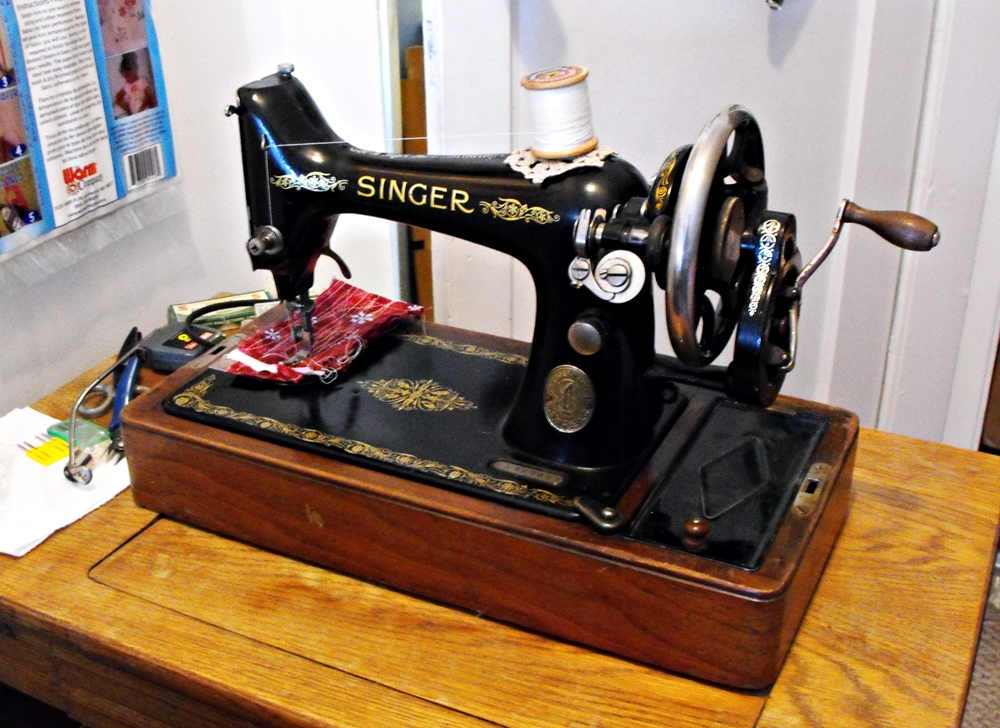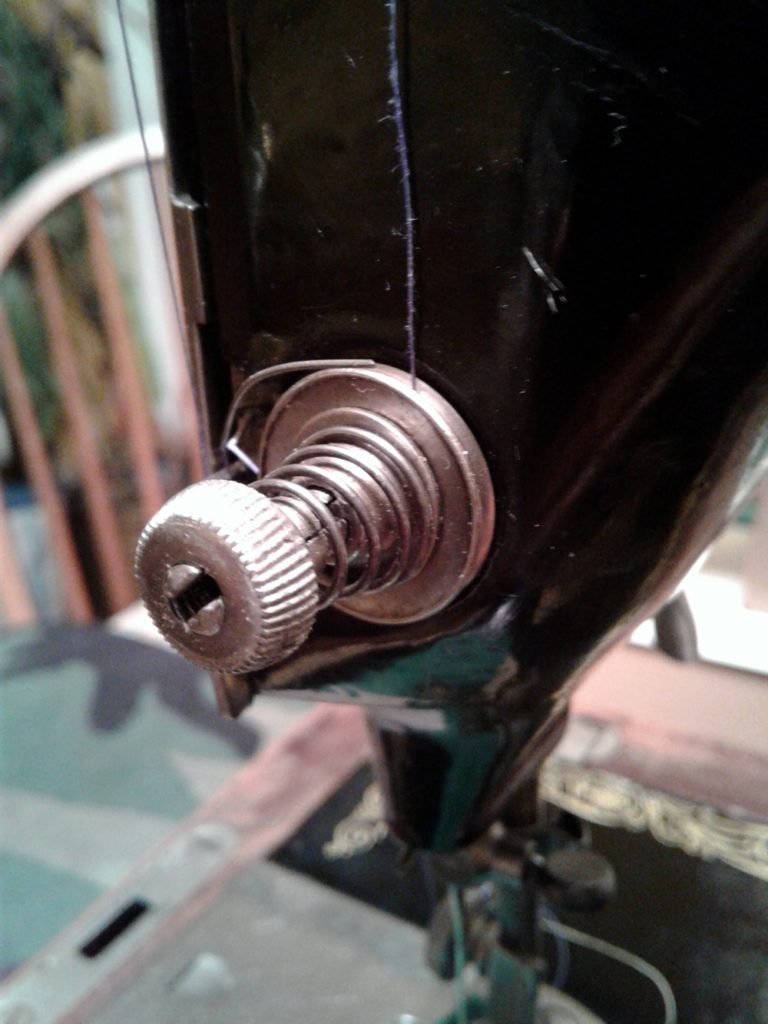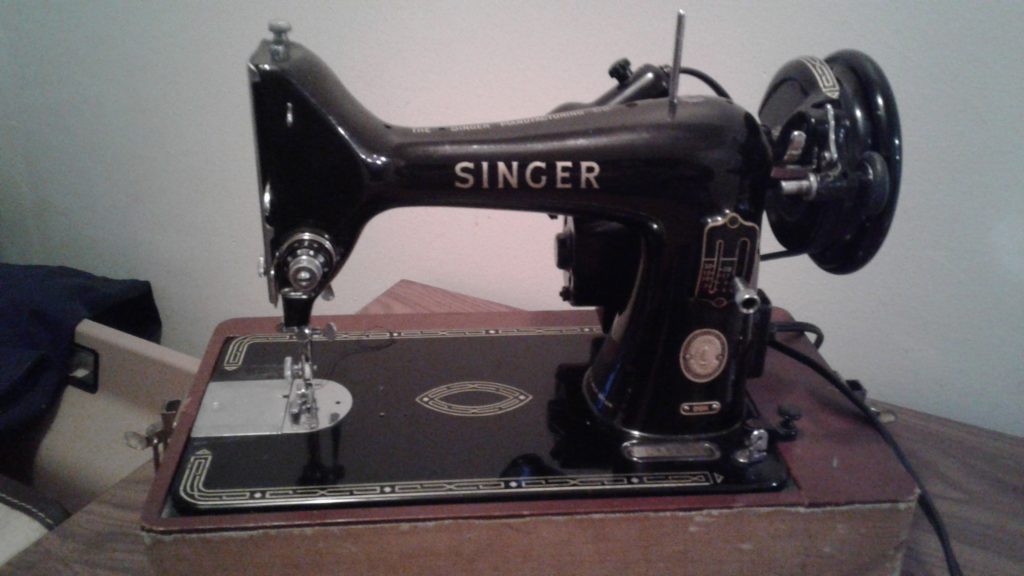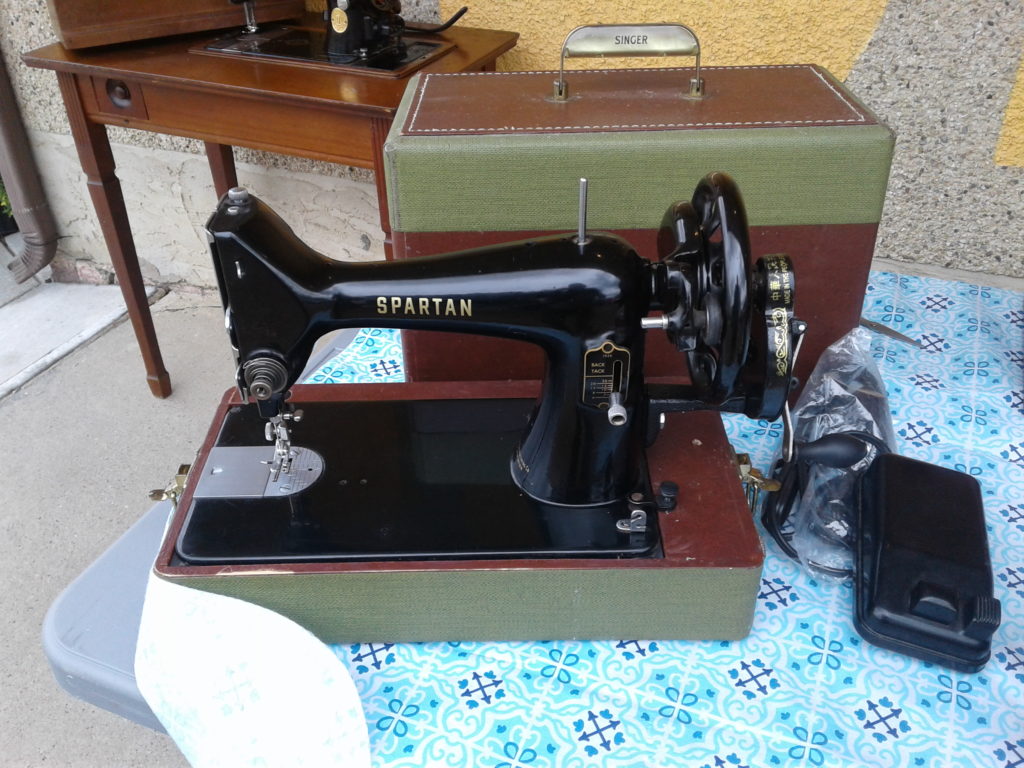After Singer introduced the Singer model 66 in 1901-02 they realized the market demanded a smaller and more portable version of what was one of the best machines of it’s time.
In 1911 the Singer 99 met the world and the world loved it, it offered the same superb stitch quality of it’s big sister, and could have been purchased as a portable electric or hand crank, as a treadle machine, or set into a table. These were manufactured in the United States and Britain in great numbers.

This 1922 Singer 99 hand crank is in our permanent collection and one might note the smaller tension discs that were used on the early models, this machine would not get a reverse until the mid 1950’s.


In the mid 1950’s the Singer 99 and the model 66 got a back tack / reverse control and a numbered upper tension dial.

The final version of the 99 was the 99-31 which brought in the third and final type of stitch length control, a new light fixture, and in the early 1960’s it was replaced by the model 185, which is mechanically the same, but comes in a sleeker body.
Singer also offered a model called the Spartan (model 192k) which was a stripped down version of the 99, with no light and just a simple base that sold for $99.00 instead of the $129.00. In the 1950’s this was the equivalent of spending $900.00 to $1100.00 so neither was an inexpensive purchase, but the lowest priced Singer machines you could buy.

This Spartan has had a hand crank and spoked wheel added to it, and has been fitted to a nicer case… they have become a very popular candidate for this conversion.
This Singer model sold in the millions over a period of over 50 years and was surely one of the most successful models they ever offered, it’s sales were only surpassed by the Singer 15 which was produced for over 70 years in a number of variations.
One extremely rare variant of the 99 is the 99-10, which was an aluminium version of the machine that was sold briefly in the early 1920’s… we have yet to find one and when we do it will join our little museum of machines.
Follow us on Facebook